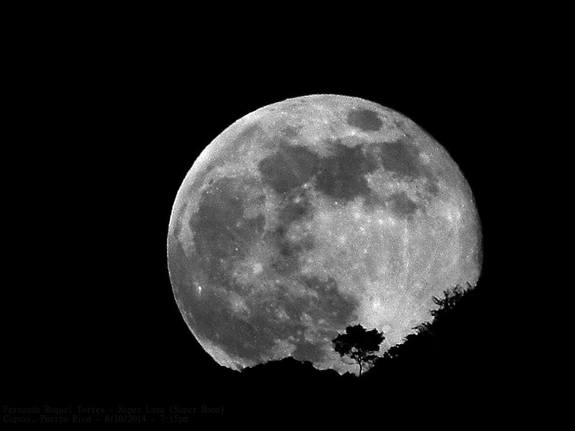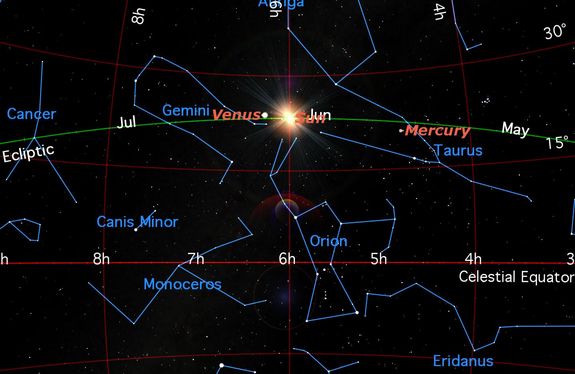On Monday (June 20), the full moon will fall on the solstice for the first time since 1948. To celebrate this special occasion, the online Slooh Community Observatory will broadcast views of the moon live from the Canary Islands.
The broadcast starts at 8 p.m. EDT (0000 GMT Tuesday, June 21) and will include discussion between Slooh host Paul Cox and Slooh astronomer Bob Berman. You can watch the Slooh webcast at Slooh.com , and ask questions via Twitter @Slooh. Viewers can also submit questions via Slooh’s chat room, where you can also control the StarShare camera live and snap night-sky views.
You can also watch the summer solstice full moon webcast on Space.com , courtesy of Slooh. The show will also include special guests who will discuss the importance of the summer solstice , which is the longest day of the year and the official beginning of summer in the Northern Hemisphere.

A full moon rises over Caguas, Puerto Rico in this image captured by photographer Fernando Roguel Torres on Aug. 10, 2014. The full moon of June 20, 2016 is a rare Summer Solstice Full Moon, the first since 1948.
Credit: Fernando Roquel Torres, Sociedad de Astronomía del Caribe
“Having a full moon land smack on the solstice is a truly rare event,” Berman said in a statement. “We probably won’t push people off pyramids like the Mayans did, but Slooh will very much celebrate this extraordinary day of light with fascinating factoids and amazing live telescope feeds.”
During the event, Janice Stillman, editor of the “Old Farmer’s Almanac,” will be on hand to discuss the solstice’s cultural significance. She will pull from the archives to talk about some of the rituals that are celebrated at summer’s start. Slooh will also show parts of the solstice ritual that observatory representatives took part in at the Wanderlust Yoga Festival before the show was broadcast.

Monday, June 20, 6:34 p.m. EDT. The Sun marks midsummer in the Northern Hemisphere, and midwinter in the Southern, reaching its farthest declination north.
Credit: Starry Night Software
Which of these lunar displays is your favorite skywatching treat?
If you’re interested in taking pictures of the moon, astrophotographer Robert Reeves will be on hand during the show to recommend the best equipment for beginning astronomers.
Slooh also announced in the statement that in this show, the observatory begins a collaboration with the Science Channel to promote live astronomy events. Slooh has been active since 2003, using automated observatories to broadcast live events over the internet. Its observatories are in the Canary Islands and in Chile, and it also has broadcast in past years with partners located in places such as Arizona, Japan, Hawaii, Cypress, Dubai, South Africa, Australia, New Zealand and Norway.
Editor’s note: If you snap an amazing photo of the summer solstice full moon that you’d like to share it with Space.com and our news partners for a possible story or image gallery, please semd photos and comments in to: spacephotos@space.com.
Follow Elizabeth Howell @howellspace , or Space.com @Spacedotcom . We’re also on Facebook and Google+ . Original article on Space.com .

Comments are closed.